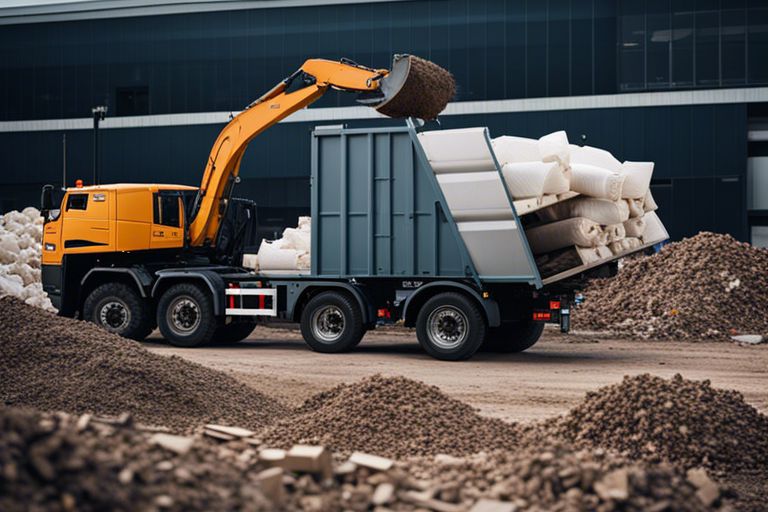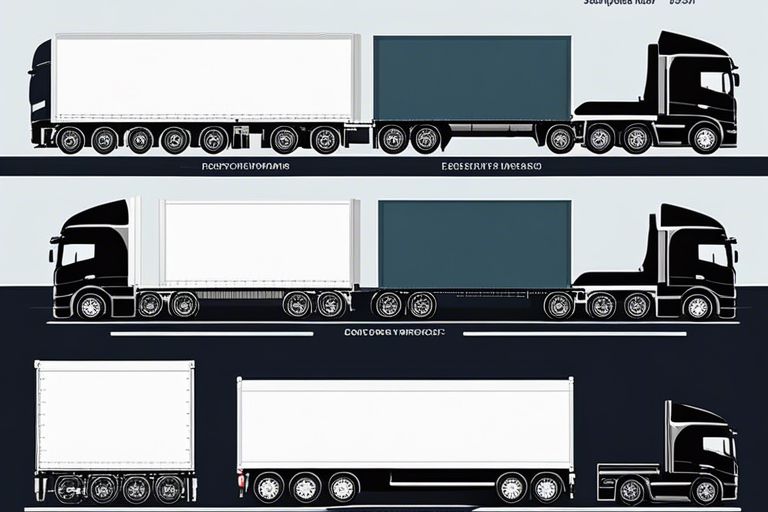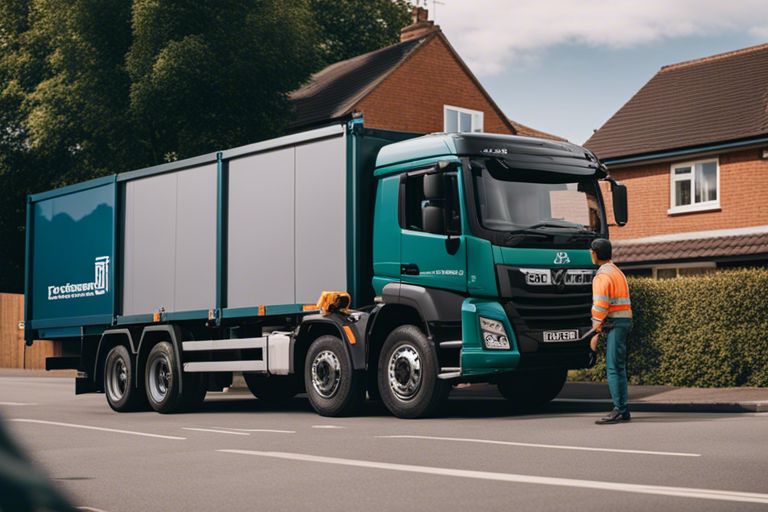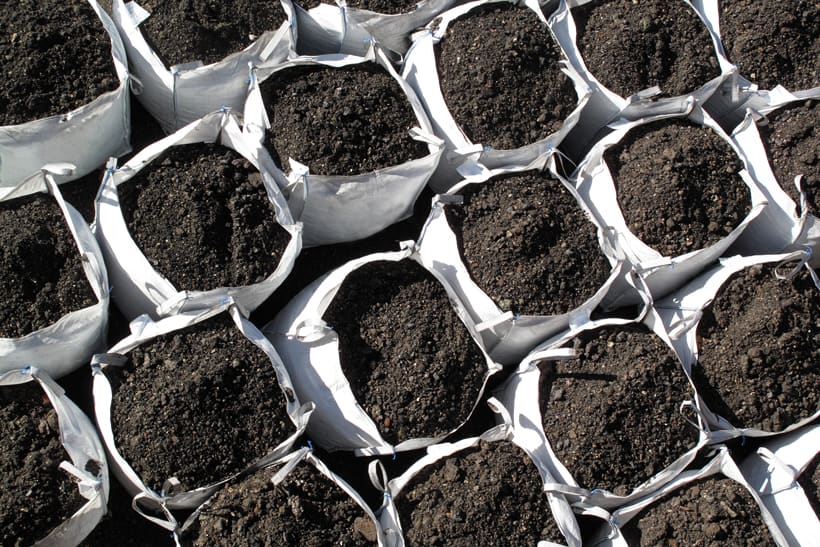Obfuscate. The effective implementation of Site Waste Management Plans (SWMPs) is crucial in reducing the environmental impact of construction activities. By managing and minimising waste, construction companies can contribute to a sustainable future and protect the environment from the harmful effects of unchecked waste deposition. SWMPs not only reduce the amount of waste destined for landfillscontamination of water sourcesFrom Waste to Wetlands.
Key Takeaways:
- SWMPs are crucial in reducing construction waste by promoting proper waste management on construction sites.
- Implementing SWMPs can lead to cost savings for construction companies through efficient waste handling and recycling of materials.
- Compliance with SWMP regulations not only benefits the environment but also helps improve a company’s reputation as an environmentally responsible and sustainable business.
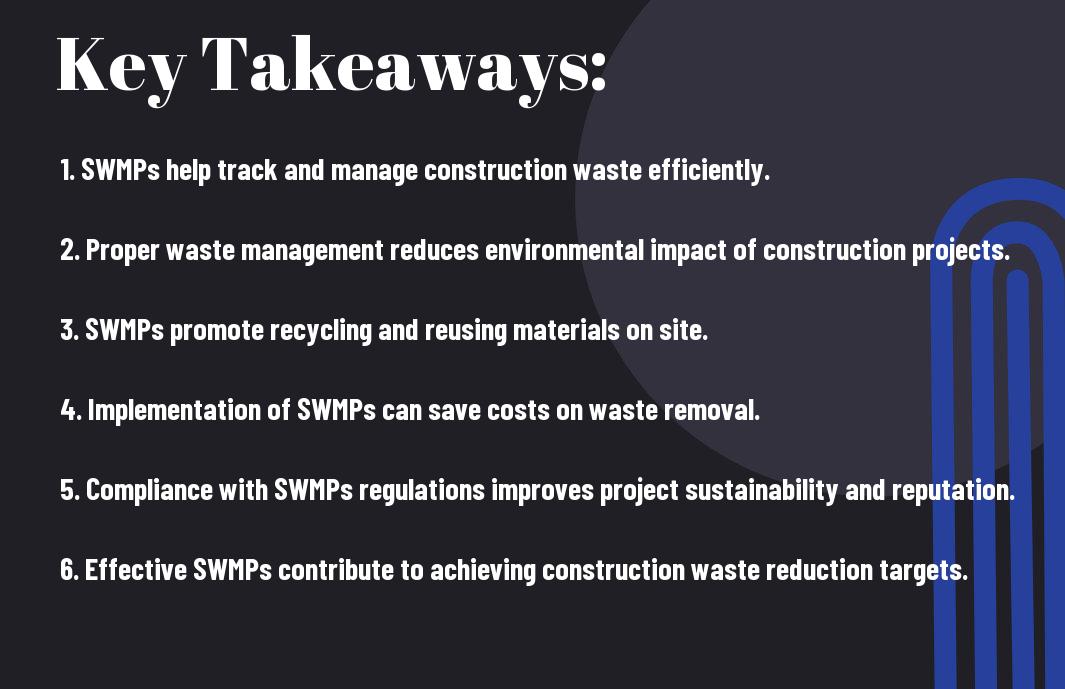
The Role of SWMPs in Waste Management
Site Waste Management Plans (SWMPs) play a crucial role in effectively managing and reducing construction waste. They provide a structured approach to identifying, managing, and minimising waste throughout the construction process.
Legal Requirements and Guidelines
Under the Construction (Design and Management) Regulations 2015, construction projects in the UK are required to have a written SWMP for any project with a total estimated cost of £300,000 or more. The SWMP must be prepared before work begins, and be reviewed and updated as the project progresses. The Environment Agency provides guidelines for the content of an SWMP, including the requirement to identify and assess waste streams, set waste reduction targets, and outline the measures to achieve them.
Benefits of Implementing an SWMP
Implementing an SWMP can bring various benefits to construction projects. These include reducing waste disposal costs, improving resource efficiency, enhancing project management, and demonstrating environmental responsibility. By implementing an SWMP, construction companies can also improve their reputation and win more contracts by showcasing their commitment to sustainable practices.
Furthermore, adopting sustainable waste management practices can also contribute to meeting sustainability targets and regulatory requirements, resulting in long-term cost savings and a reduced environmental impact. It is also an opportunity to comply with legal obligations, improve efficiency, and gain a competitive edge in the construction industry.
Developing a Successful SWMP
When it comes to developing a successful Site Waste Management Plan (SWMP), there are several key components that need to be considered to ensure its effectiveness. A well-thought-out SWMP is crucial in reducing construction waste and promoting sustainability within the construction industry. It requires careful planning and implementation to achieve the desired results.
Key components of a successful SWMP include thorough waste assessment, setting clear objectives, establishing waste segregation and disposal procedures, regular monitoring and reporting, and compliance with relevant regulations and standards. It is essential to involve all stakeholders, including contractors, subcontractors, suppliers, and clients, in the development and execution of the SWMP to ensure its success.
Key Components of a SWMP
A successful SWMP should include
- Waste assessment: Identifying and quantifying the types and quantities of waste generated during the construction project.
- Clear objectives: Setting specific targets for waste reduction, recycling, and diversion from landfill.
- Waste segregation and disposal: Implementing effective waste segregation at the source and ensuring proper disposal methods are followed.
- Monitoring and reporting: Regularly monitoring waste generation and reporting on the progress towards meeting the set objectives.
- Compliance: Ensuring compliance with legal and regulatory requirements related to waste management.
Case Studies: Effective SWMP Examples
Examining successful case studies of Site Waste Management Plans (SWMPs) can provide valuable insights into their effectiveness in reducing construction waste. These examples showcase the positive impact of well-executed SWMPs on waste reduction, resource efficiency, and environmental sustainability within the construction sector. They serve as practical illustrations of how a carefully developed and implemented SWMP can bring about significant changes and improvements.
- Case Study 1: A construction project in Manchester successfully reduced its waste generation by 30% through the implementation of a comprehensive SWMP.
- Case Study 2: A large-scale residential development in London achieved a recycling rate of 75% by incorporating innovative waste management practices outlined in a detailed SWMP.
- Case Study 3: A commercial building project in Birmingham minimised its landfill waste by 50% by effectively implementing a tailored SWMP aligned with sustainable construction principles.
These case studies demonstrate the positive impact of SWMPs in reducing construction waste, achieving high recycling rates, and promoting sustainable construction practices. They underline the importance of developing and adhering to a comprehensive SWMP for the successful management of waste within construction projects.
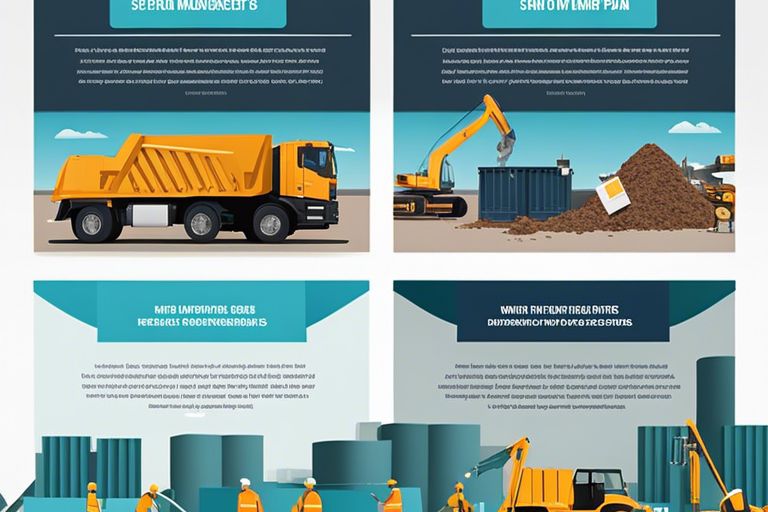
Challenges and Solutions in SWMP Execution
When it comes to executing Site Waste Management Plans (SWMPs) in construction projects, there are various challenges that often arise. These challenges can hinder the successful implementation of SWMPs, leading to increased construction waste and environmental impact. However, there are also effective solutions that can be adopted to overcome these obstacles and ensure the efficient execution of SWMPs.
Common Pitfalls in SWMP Implementation
One common pitfall in SWMP implementation is the lack of awareness or understanding among construction personnel regarding the importance of SWMPs. This can result in incomplete or inaccurate reporting of waste data, leading to ineffective waste management strategies. Additionally, inadequate training and resources for SWMP implementation can contribute to the underperformance of SWMPs.
Another common challenge is the reluctance of subcontractors to comply with SWMP requirements, leading to inconsistencies in waste management practices on site. This can result in the improper segregation and disposal of waste, undermining the overall effectiveness of the SWMP.
Strategies for Overcoming Obstacles
To address the common pitfalls in SWMP implementation, it is essential to prioritise raising awareness and providing comprehensive training for all personnel involved in the construction project. By ensuring that everyone understands the significance of SWMPs and the proper procedures for waste management, the accuracy and reliability of waste data reporting can be improved.
Additionally, fostering a collaborative approach with subcontractors and involving them in the development of SWMPs can help in promoting their compliance. By clearly communicating expectations and providing the necessary support and resources, subcontractors can be encouraged to actively participate in the proper execution of SWMPs.
Furthermore, incorporating regular monitoring and evaluation processes can help in identifying any gaps or issues in SWMP execution, allowing for timely adjustments and improvements to be made. Implementing a feedback loop and reviewing the performance of SWMPs can facilitate continuous enhancement and ensure the effective management of construction waste.
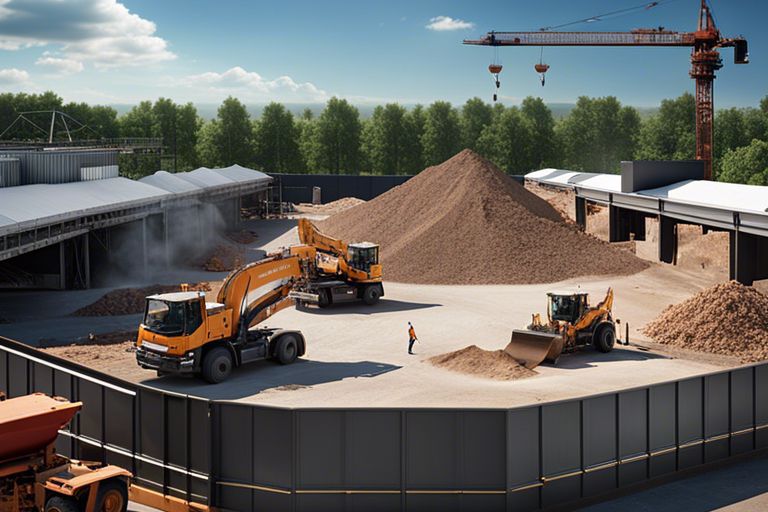
SWMPs and Sustainability
When it comes to construction waste management, the implementation of Site Waste Management Plans (SWMPs) plays a crucial role in promoting sustainability within the construction industry. SWMPs are instrumental in ensuring that construction and demolition waste is managed in an environmentally responsible manner, thereby contributing to the overall sustainability of construction projects.
Infilling wetlands with Construction and Demolition (C&D) waste is a severe environmental issue that can have a detrimental impact on ecosystems. SWMPs are designed to mitigate such environmental damage by ensuring proper disposal and recycling of construction waste materials.
Environmental Impact Mitigation
SWMPs are essential for mitigating the environmental impact of construction activities. By carefully planning and managing the disposal of construction waste, SWMPs help prevent pollution, reduce strain on landfill sites, and minimise the depletion of natural resources. Through effective waste segregation and recycling initiatives outlined in SWMPs, construction projects can significantly reduce their environmental footprint and contribute to a more sustainable built environment.
Long-Term Advantages of Sustainable Practices
Adopting sustainable practices, as advocated by SWMPs, not only mitigates immediate environmental impact but also establishes a foundation for long-term environmental stewardship. By integrating sustainable waste management principles into construction projects, the industry can drive positive change and pave the way for a more environmentally responsible future. This approach also presents opportunities for cost savings, resource efficiency, and regulatory compliance, thus yielding long-term benefits for both the environment and the construction sector.
Key words: sustainability, construction waste management, SWMPs, environmental impact, mitigation, long-term advantages, sustainable practices
The Importance of SWMPs in Reducing Construction Waste
In conclusion, Site Waste Management Plans (SWMPs) play a crucial role in reducing construction waste and promoting sustainability within the construction industry. By implementing SWMPs, construction companies can effectively monitor and manage the disposal of waste, leading to less waste being sent to landfill sites and a reduced environmental impact. Additionally, SWMPs can help to identify areas where waste can be minimised, reused, or recycled, thereby promoting a more efficient use of resources. By adhering to SWMP regulations, construction companies not only reduce their environmental footprint but also improve their reputation and potentially save costs in the long run. It is clear that SWMPs are an essential tool in the effort to reduce construction waste and contribute to a more sustainable future for the construction industry.
FAQ
Q: What are SWMPs and why are they important in reducing construction waste?
A: SWMPs, or Site Waste Management Plans, are crucial in reducing construction waste as they help in identifying, managing, and minimising waste on construction sites. By implementing SWMPs, construction companies can track their waste generation, set targets for waste reduction, and promote recycling and reuse of materials.
Q: How do SWMPs benefit the environment?
A: SWMPs benefit the environment by reducing the amount of construction waste sent to landfill, thereby minimising the environmental impact of waste disposal. Additionally, SWMPs promote sustainable practices such as recycling and using renewable resources, ultimately contributing to a greener construction industry.
Q: What legal requirements are associated with SWMPs?
A: In the UK, the Construction (Design and Management) Regulations 2015 require construction projects to have a written SWMP if the project is expected to produce more than 300 tonnes of construction waste. Compliance with these regulations is essential to avoid penalties and ensure responsible waste management.
Q: How can SWMPs help in cost-saving for construction projects?
A: Implementing SWMPs can lead to cost savings for construction projects by reducing waste disposal costs, minimising the need to purchase new materials through recycling and reuse, and improving overall efficiency in waste management. By adopting sustainable waste practices, construction companies can achieve economic benefits while reducing their environmental footprint.
Q: What are the key components of a successful SWMP?
A: A successful SWMP should include a detailed waste assessment, clear waste management procedures, targets for waste reduction, measures for recycling and reusing materials, and regular monitoring and reporting of waste generation. Additionally, effective communication and involvement of all stakeholders are crucial for the successful implementation of SWMPs.


